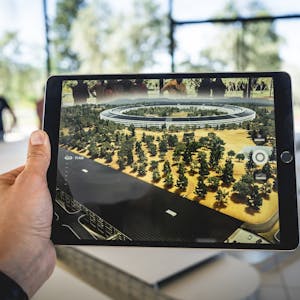Welcome to the "Desarrollo de Realidad Aumentada" course, where you'll delve into the world of augmented reality (AR) app development. This practical workshop guides you through the process of creating AR applications tailored to current market needs. Through a blend of theory and hands-on experience, you'll explore fundamental concepts for utilizing software, game engines, and SDKs to enable AR interaction on mobile devices.
Key course components include:
By the end of this course, you'll possess the knowledge and skills needed to develop cutting-edge AR applications, making you a valuable asset in the rapidly evolving field of augmented reality.
Certificate Available ✔
Get Started / More Info
The "Desarrollo de Realidad Aumentada" course covers Unity 3D basics, UI design, programming, 3D model configuration, and application development in a practical, project-based format.
This module introduces the "Desarrollo de Realidad Aumentada" course and provides an overview of the syllabus, forum participation, and course expectations. It sets the stage for your journey into AR app development with practical, project-based learning.
In this module, you'll delve into Unity 3D, covering the download, installation, interface navigation, Vuforia integration, and the development of your first AR application. Alongside this, you'll gain familiarity with essential terminology and complete a graded assessment.
This module focuses on UI design in Unity, encompassing the creation and management of UI elements, asset insertion, button configuration, and the development of functional UI for AR applications. You'll also undergo a comprehensive terminology review and complete a graded assessment.
Here, you'll explore programming in Unity 3D, including the download of Visual Studio, script creation for switching and jumping, application development using scripts, and the installation of Visual Studio. A graded assessment is also included.
This module introduces you to 3D model configuration in Unity, covering the basics, manipulation, optimization, and integration for AR applications. You'll then complete a graded assessment to reinforce your learning.
In this final module, you'll review and consolidate your knowledge of Vuforia, UI, scripts, and 3D models. This module culminates in the creation of your final AR application, providing a practical application of your newly acquired skills.
Google IT Automation with Python is a six-course certificate program developed by Google, designed to equip IT professionals with in-demand skills like Python, Git,...
This certification program by Google prepares entry-level IT support specialists with skills in hardware, software, customer support, and networking.
System Administration and IT Infrastructure Services is a comprehensive course that equips you with the skills to manage and maintain computer systems in a multi-user...
This course delves into memory management within operating systems, covering segmentation, paging, swapping, and virtual memory to optimize performance.